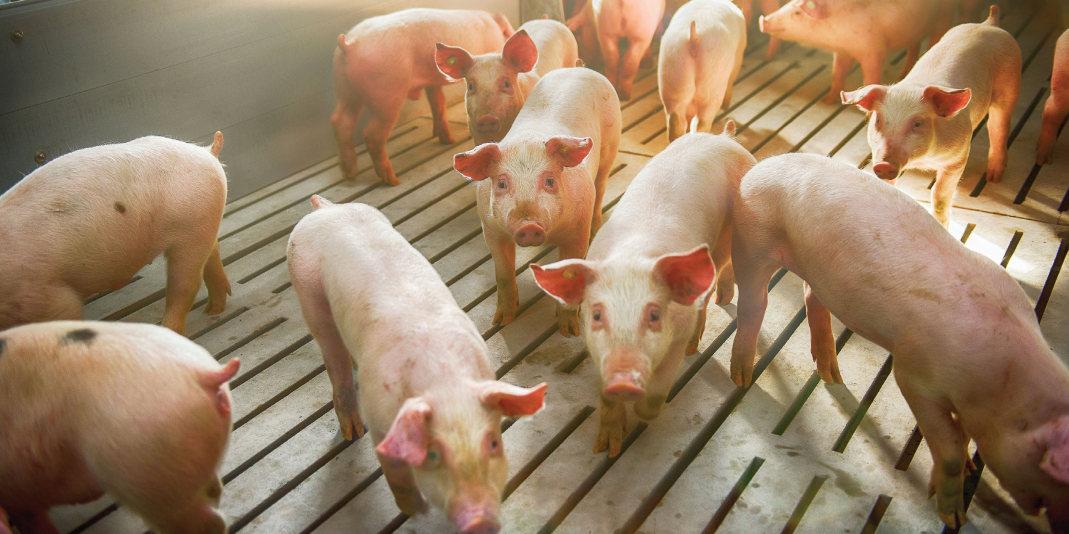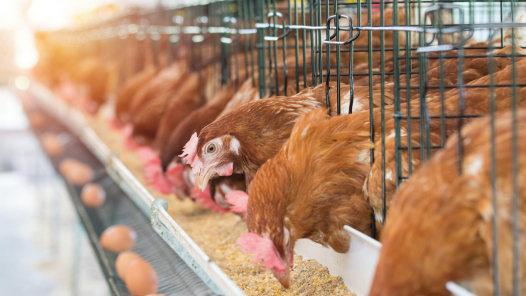
7 minute read
Space saving sorting systems for livestock
Smart sorting systems improve farm efficiency
The system’s precision information for feed development enables hassle-free switching between the types of feed for the animal. Image Credit: Adobe Stock
The intelligent sorting system from Nedap not only solves space issues but also increases the well-being of pigs with tailored feed arrangements.
SMARTLY STRUCTURED FEED and stall systems can result in increased efficiency in terms of space, labour and costs. Housing structure solutions aim to solve the issue of space which comes at a premium for livestock farmers.
Nedap, a multinational livestock management technology company, allows livestock farms to re-imagine layouts and deliver as many as 11% more pigs from the existing real estate.
The company says it understands space is precious and land does come at a premium in the age of soaring real estate prices for commercial operations. Nedap aims to bring about efficiency by getting rid of concrete and plastic partitions and feeding the animals based on body weight. This makes for efficient use of square footage while feed patterns are tailored to exact requirements.
Nedap’s ‘PorkTuner’ is a system where pigs can be sorted based on bodyweight and led to assorted feeding stations.
The company’s model system consists of two feed stations, a resting area and a passage to the station with three exits. For 300-600 pigs, the system weighs individual pigs and leads them to either feed stations, designated with the feed suitable for the pig. The system’s precision information for feed development enables hassle-free switching between the types of feed for the animal. With this tailored system, the company reports faster growth and improved feed conversion.
The PorkTuner’s third exit leads the pigs to the delivery space once they are grown to delivery weight. The farm operator is able to use all the space available until the pigs reach delivery weight allowing for partition of selection space only when sorting.
According to Nedap, with its system, the average yield price per kilo is increased with no weight discount to worry about. The operator can also experience improved delivery planning with the system providing a detailed diagnosis of main, intermediate and residual deliveries from each pen. The system comes with a dashboard which can be accessed with the use of a computer, letting the operator see the exact number of pigs to be loaded.
Farms can also benefit from lower feed costs and better security against bio-risks. Reducing animal-human contact is always beneficial with a low risk of disease spread. Automatic sorting allows the farm to be less labour intensive and with very little fencing and corners, stalls are cleaned and disinfected easily. ■
Housing systems define production levels in poultry
Regulatory requirements for poultry houses often revolve around facilitating suitable micro-climatic conditions for the birds.

As the world demands higher efficiency in food production, we take a look at variants of poultry housing systems viable for commercial production.

THE NEED FOR a viable poultry housing system has been at the heart of recent developments in the poultry industry. Protecting birds from adverse oconditions outside and maintaining a scientific feeding system have been becoming more mandatory as the years roll by. Strict regulatory codes developed to provide healthy and sustainable living conditions for birds to thrive, often provide companies with a blueprint to design the perfect environment. Regulatory requirements for poultry houses often revolve around facilitating suitable micro-climatic conditions for the birds. This ensures effective disease control measures to be taken by the management as well as ensuring supervision of the growth and development of the birds.
Basic principles of poultry construction follow a layout that negates the human contact as much as possible. Fresh air passing through the brooder shed, followed by grower and layer sheds prevents the spread of diseases from layers to brooders. Utilities such as feed store, office and even the egg store are advised to be kept near the entrance to minimise the contact between the humans and the birds. The disposal pit and sick room are to be constructed at the end of the poultry to minimise the foul smell, disease risk and many other issues that come along with dealing with excretion from the birds. Appropriate distance between the chick, grower and layer sheds are also stringently observed.
Optimal environment Temperature and airflow are possible two of the most important factors in the construction of poultry housing. Maintaining temperature between 22-30 C is considered optimal with relative humidity to be maintained anywhere between 30-60%. Levels of ammonia are also important and are advised to be kept at less than 25 ppm, while litter moisture hovering between 15-25% is acceptable. The most important of all which is airflow, should always to b maintained between 10-30 meters per minute.
Open-sided poultry houses in tropical climates are advised to have a width, not more than 22-25ft, in order to allow for ventilation and airflow. For sheds wider than the said measurements, ridge ventilation at the middle line with proper overhang is mandatory. The ridge ventilation helps hot air and gases move upward and escape. In environmentally controlled poultry houses, the width of
the house may even be 40 ft or more since the ventilation is controlled with the help of exhaust fans.
In broader terms, poultry housing is mainly divided into three categories; Free-range or extensive, semi-intensive and intensive systems.
Free range housing Free-range or extensive poultry systems are adopted where there is adequate land availability to ensure the desired stocking density to avoid overcrowding. Foraging is maintained as the main source of feeding for the birds with shelters provided by temporary roofing. The space is used on a rotational basis after crop harvesting and is used preferably for organic egg production.
Free-range systems usually require lesser capital investments and observe low feed requirements. The system is usually adopted by farmers looking to maintain the fertility of the soil through the usage of land on a rotational basis along with crops.
Shortcomings, however, prove to be costly in this method with a lesser scope of adopting scientific management practices. Accountability of eggs laid is less due to the absence of designated areas and the farm is prone to predatory animals and wild birds, causing fatality via diseases or bird kills.
Semi-intensive systems This system of housing combines confinement and free-ranging. Birds are given access to roam freely as per batch schedules with contamination levels to be considered. Adult birds can be housed at a stocking density of 750 per ha and are most commonly used in duck rearing facilities.
The semi-intensive systems make more sensible and economical use of the land provided with better protection from outside elements when compared to free-range farms. The poultry can also engage in disease control and scientific operation to a better extent.
The biggest disadvantage of the semi-intensive systems, as reported by operators, is said to be the regular build-up of litter in the pens, with expensive watering systems the only solution to mitigate this problem.
Intensive systems Poultry systems where birds are completely confined to houses on the ground level or on wire-netted floors in cages or slats are termed to be intensive poultry farming. This is the most widely used system present in the wider-commercial poultry industry, known for its efficiency and high profitability.
This is further categorised into four variants in which the ‘Deep-litter’ system houses birds on a litter material made of paddy husk and other natural processed by-products of thickness between 3-5 in. The ‘Slatted floor’ system uses iron or wooden slats raised above the grounds.
The ‘Slat cum litter’ system uses 60% of the floor area covered with slats and the rest with litter. The system is commonly used for

The caged system is commonly used for birds in hatching egg production and meat-type breeders.
birds in hatching egg production and meat-type breeders.
The ‘Cage’ system involves housing birds on raised wire netting in small compartments and is regarded as the most efficient system present in terms of egg production. The system represents a majority of commercial layers in the world that are kept in cages.
Intensive poultry farming is widely regarded as the most profitable housing method for commercial purposes. The system is most efficient when it comes to land usage with easy access to scientific management practices such as breeding, feeding, disease prevention and culling. ■






